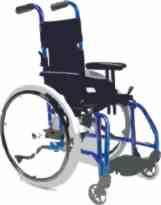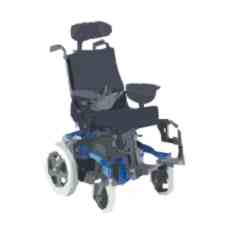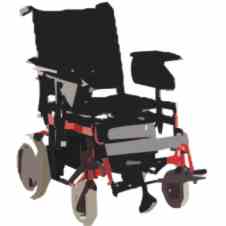Equipment Types
On this page are a few examples of the types of equipment issued by the Posture and Mobility Service.
When we select our range we look at:
- Safety - for the user, carers and the public.
- Durability - how long we expect it to last under normal operating conditions.
- Clinical Evidence - how many other people are using it, and what are their experiences?
- Re-usability - when it is returned to us, what is the likelihood we will be able to make it "as new" and reissue?
- Postural benefit - will it help people with postural and pressure issues?
- Value - are alternatives available which will do the same job for less?
- Ease of use - is the equipment simple enough to use, and are the instructions easy to follow? How much instruction is required?
When we assess someone, we will work with the person to identify which equipment best meets their needs, and which they can safely use to its best potential. Issue of accessories is related to clinical need also. We will always try to avoid over-prescription, as it decreases value for money in the services we provide, and can in some cases inhibit the functionality and clinical benefit of the base equipment.
We will only issue equipment where there is an essential posture or mobility need. In some cases this may be different to what was expected, or we may refuse to issue equipment on safety grounds. We will explain our reasons in these cases.
Cushions
Wheelchair cushions are prescribed according to clinical need. Many people do not need one at all. Cushions vary in range from simple foam cushions which can be issued from information given by the referrer, to bespoke prescription items and moulded seating systems which may be issued following assessment.
|
Paediatric Buggy
|
|
|
Paediatric Manual Wheelchair
|
|
|
Paediatric Powered Wheelchair
|
|
|
Standard Transit Wheelchair
|
|
|
Standard Self-Propelled Wheelchair
|
|
|
Lightweight Self-Propelled Wheelchair
|
|
|
Indoor/Outdoor Powered Wheelchair
|
|
If you already have a wheelchair or buggy, you should have been supplied with a User Instruction Manual. If you do not have one, please let us know and we will send one out to you.
Rydym yn croesawu galwadau ffôn yn Gymraeg, Saesneg a Iaith Arwyddion Prydain (BSL) via SignVideo.
We welcome phone calls in Welsh, English and British Sign Language via via SignVideo.






